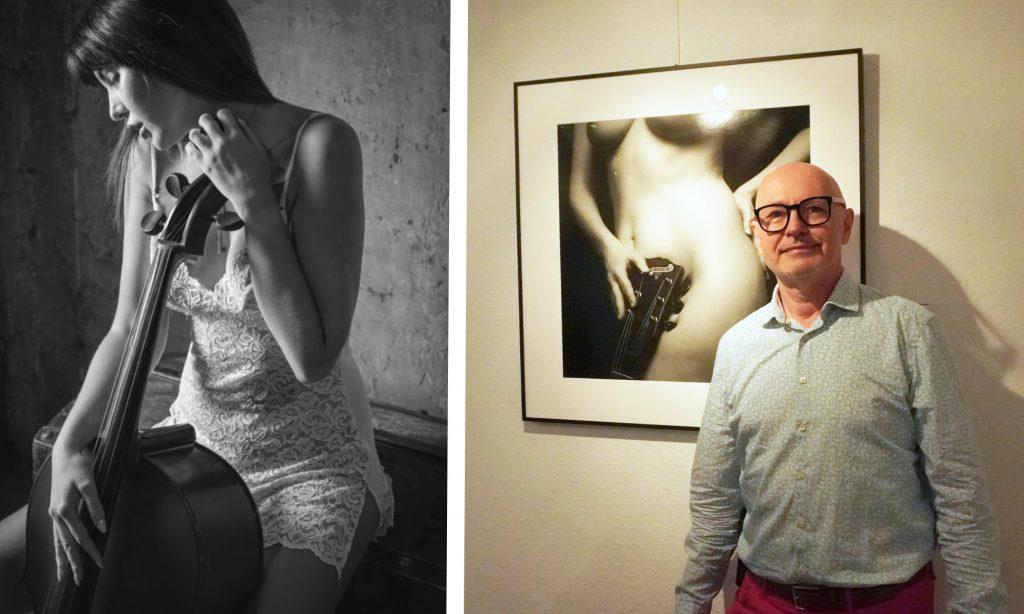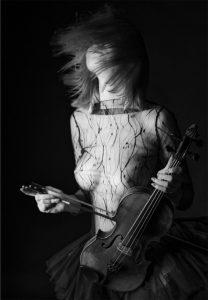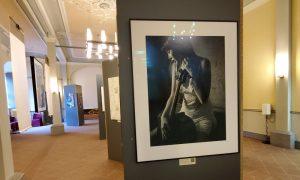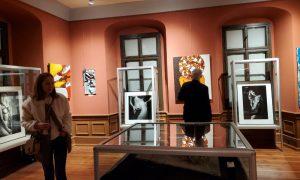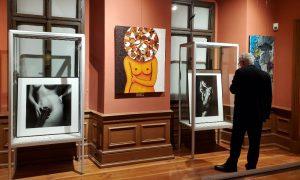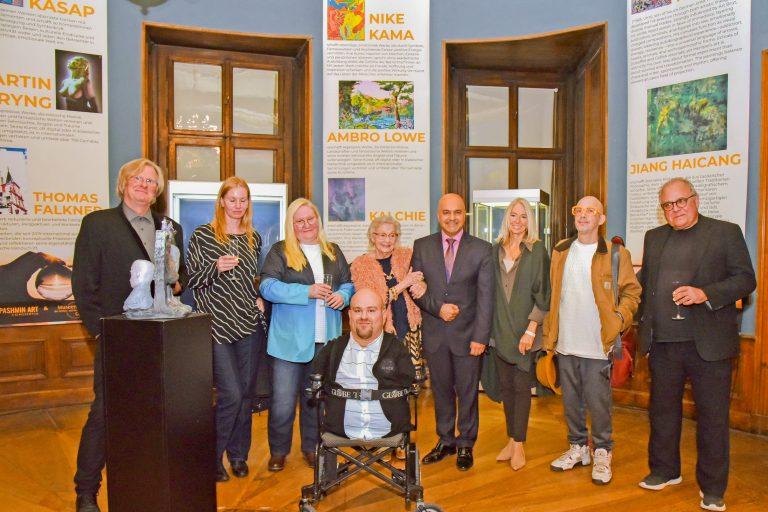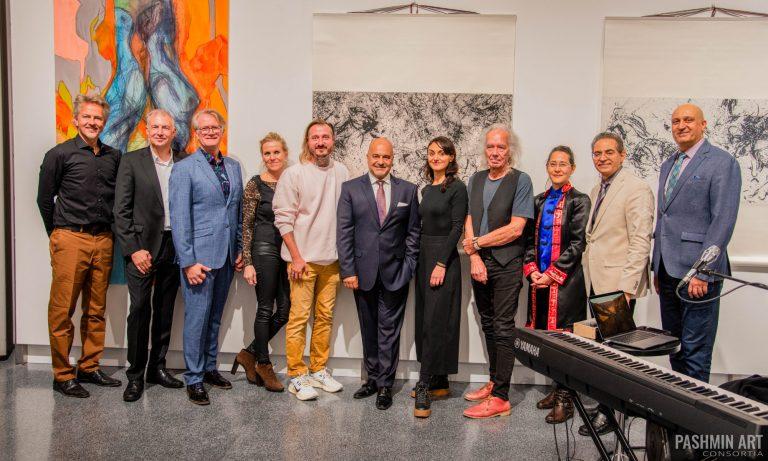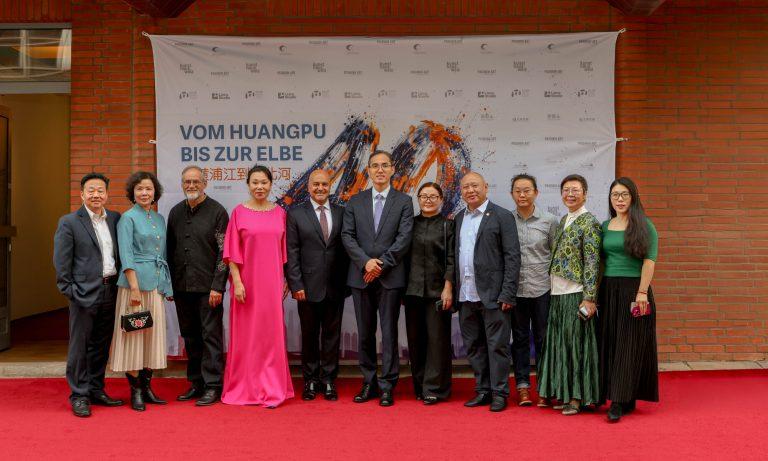Karlheinz Wachsenegger, an accomplished photographer with a musical background in jazz, has embarked on a journey that combines his love of music and photography. He captures the deep connections between musicians and their instruments. His work goes beyond traditional photography and elevates musical instruments to emotional, almost human beings. A significant focus of his international activities is Germany, where his work has been particularly recognised. A highlight of his career was the exhibition of his photo series at the Schlossmuseum in Greiz, a historic town that combines art, culture and history in Germany.
Karlheinz Wachsenegger: The connection between music and photography
Wachsenegger’s journey into photography began over 45 years ago while working in various industries around the world. Always equipped with a camera, he documented his professional activities and the cultures he encountered. His passion for photography grew steadily, and in 2019 he decided to give up his industrial career and devote himself entirely to photography. After his professional training in Vienna, he now devotes himself entirely to visual storytelling.
The Influence of Music
Music – especially jazz – played a central role in the development of his photographic approach. As a trained jazz musician, Wachsenegger learned the art of improvisation – giving free rein to emotions in the moment. This ability also characterises his photography, especially his portraits, in which he captures the unadulterated emotions of his models. His pictures are more than mere images; they are emotional snapshots that make the intimate connection between photographer and subject tangible.
The Greiz Castle Museum: An artistic milestone in Germany
An outstanding moment in Wachsenegger’s artistic journey was his exhibition at the Castle Museums of Greiz (Museen der Schloss- und Residenzstadt Greiz im Oberem- und Unterem Schloss), Thuringia, Germany. This event, organised by the Pashmin Art Consortia, presented a remarkable selection of his works, featuring series like Piano Love, Violin Love, Cello Love, and Gibson Love. The selection of this historical setting in Germany, a country with a rich artistic and cultural heritage, added a layer of significance to the showcase of Wachsenegger’s work.
These photographs are not mere images of instruments; they are emotional portraits in which the instruments seem to have a soul of their own. The series, consisting of black and white silver gelatine prints on baryta paper, conveys a timeless quality, where classical music and sophisticated photographic art are held in high esteem, his work found an art-loving audience.
Emotion and connection as central themes
The exploration of emotions is at the centre of Wachsenegger’s work. In the Piano Love and Cello Love series, the instruments appear as extensions of the musician’s soul. The viewer is invited to imagine the sounds of these instruments and feel the emotional energies they convey. Through his unique perspective, Wachsenegger succeeds in visually capturing the emotional essence of the music and breathing life into the instruments. The recurrence of the word “love” in the titles emphasises the deep, symbiotic relationship between musician and instrument.
Artistic challenges and successes
Wachsenegger demonstrates great diversity by developing different perspectives on one subject in his series. Light, angle and composition change, which means that his instrument portraits never appear repetitive. The high-quality presentation of his works — set in natural white passe-partouts, elegant black wooden frames, and protected by anti-reflective museum glass — enhances their visual impact and has made them highly sought-after pieces in galleries and art fairs worldwide, with particular resonance in Germany.
Germany’s strategic importance for Wachsenegger’s career
Germany is not merely a stop along the way for Wachsenegger — it plays a key role in his strategy for international artistic outreach. With its strong foundations in musical heritage, photography, and cultural diversity, the country offers ideal conditions for the long-term establishment of his work. Additional exhibitions across various cities are already in preparation to further strengthen his presence in this vibrant market.
Following his exhibition at the Greiz Museum, Wachsenegger’s works were featured in the group exhibition “Breathlines: Between Flesh, Form and Flow”, at Pashmin Art Gallery (Hamburg) from 17 May to 13 June 2025.
Conclusion
Karlheinz Wachsenegger’s photography is a profound exploration of the human condition, bridging the realms of music, emotion, and social consciousness. His aesthetic work elevates photography to new heights, capturing the essence of musical instruments not merely as objects, but as emotional beings—alive with resonance, rhythm, and personality. These poetic compositions reflect his unique ability to connect with his subjects and express their emotional depth, turning each image into a celebration of sound, form, and the invisible power of art.
Parallel to this, Wachsenegger’s documentary photography takes a grounded and urgent perspective. With a clear and observant lens, he documents social projects, environmental transformations, and natural disasters—bearing witness to the realities of climate change and ecological shifts. These works are rooted in activism, aiming to inform, engage, and inspire action.
In both spheres—artistic and documentary—Wachsenegger’s photography stands out for its clarity, emotional reach, and commitment. It is at once a lyrical expression of beauty and a powerful medium for confronting the world’s most pressing challenges.
© Copyright of the text belongs to Dr. Davood Khazaie
